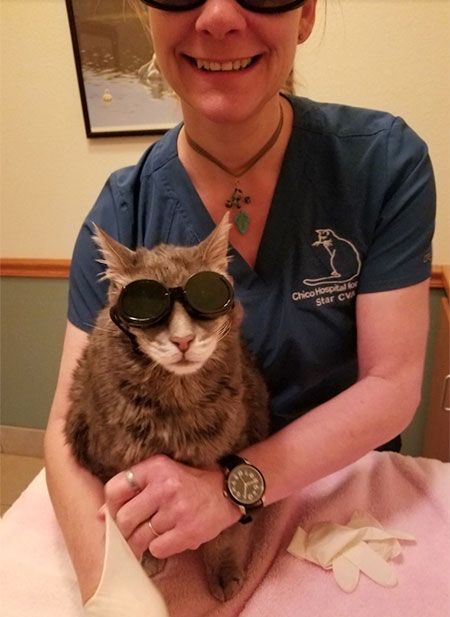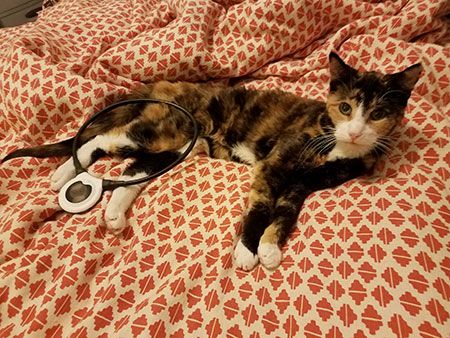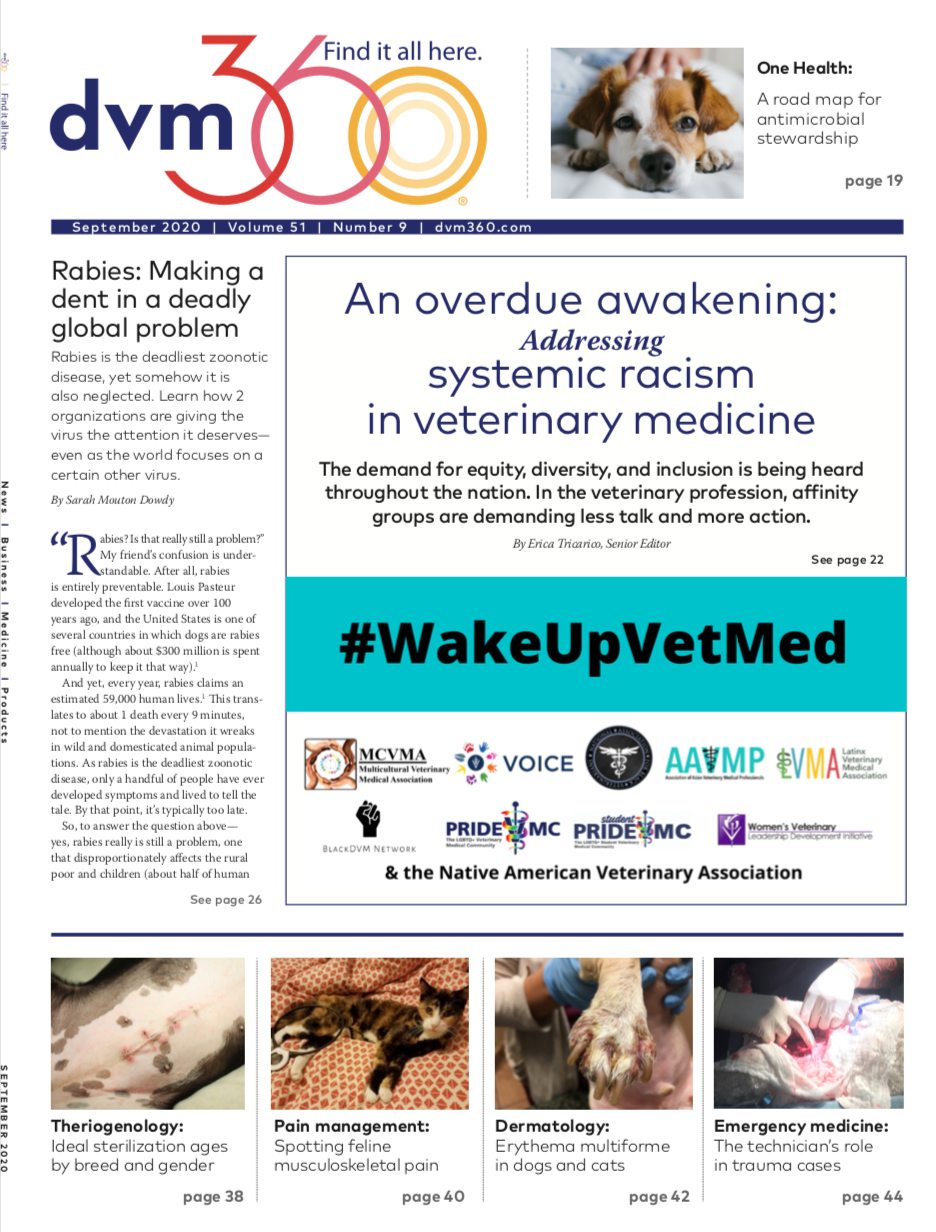Theres no place like home for spotting musculoskeletal pain in cats
The Feline Musculoskeletal Pain Index recognizes that your veterinary clients are in the best position to notice when their pet is impaired and provides a way to put their expertise to use in the exam room.

This feline patient has stopped playing with his toy--a sure sign of pain. | All photos courtesy of Dr. Colleran
“It is now accepted that the most accurate method for evaluating pain in animals is not by physiological parameters but by observations of behavior.”
-2015 AAHA/AAFP Pain Management Guidelines for Dogs and Cats
Cats are hard to read, and there's a biological reason for that. As solitary hunters, these independent creatures have no need to be outwardly demonstrative. (Dogs, on the other hand, are clear about their status and needs because communication between members of the pack is critical.)
The reason cats meow at people and rarely at each other is that humans are poor observers of the methods cats typically use to communicate. We tend to ignore their visual and olfactory cues but respond better to sounds. The resulting problem is two-fold: We have a creature who doesn't need to provide minute-by-minute status updates and people who don't pay attention.
More tools for your cat-owning clients
Arming your clients with knowledge is one of the best ways to protect the health of cats in your practice. Find free feline handouts here.
In the veterinary setting, assessing a cat's emotional and physical characteristics is often confounded by the stress of taking this territorial animal out of its territory and surrounding it with strangers. It can be especially challenging to assess gait and chronic musculoskeletal pain in an animal inclined to freeze or flee in the face of these threats.
Further complicating matters, stress masks pain in cats, and they rarely walk on command. Moreover, palpating painful joints may result in significant resistance or even injury to the person doing the assessing. (A luxating patella in a Persian cat is a good example of a potential bite wound source.) Yet, we know that nearly half the species-or about 40 million cats-have some form of musculoskeletal pain that affects quality of life on numerous levels.

A feline patient gearing up for a therapeutic laser treatment.
There's no place like home
One commonly cited advantage of veterinary house calls is that cats can be observed in their own territory, meaning they're less stressed and more willing to move around. For even better results, an invisible veterinarian who could observe the cat unseen would be ideal. With this in mind, veterinary pain specialists, feline ethologists and behavior specialists joined forces to create the Feline Musculoskeletal Pain Index (FMPI), which gives the power of observing these opaque creatures to their beloved owners.
Using language accessible to cat owners, the questionnaire asks a series of simple questions about movement, behavior, sleep and mood. Pain associated with bones, joints and muscles results in compensatory behavior alterations that can be seen by a caregiver who's known the cat for a period of time. A score is attached to the completed form which is used to evaluate the degree to which the cat has changed over time.
Power to the (cat) people
Pain assessment is a critical component of evaluating a cat's health and quality of life, and you can make your job easier by encouraging the owners of your purring patients to partner with you on the FMPI. Generally, we know that cats are at risk for osteoarthritis at age 9, so that milestone may mark a good time to start using the assessment. Have clients visit painfreecats.org to either download the questionnaire or fill it out online so the results can be part of the physical exam.
The questionnaire can be repeated over time to assess whether or not the pain management modalities you've chosen for the patient are working. Each “score” is compared to previous ones to visualize trends, identify patterns of behavior and improve outcomes. You may find you need to make adjustments, or you may see evidence that the plan is improving the life of the patient. Pain management plans tend to have several components, including pharmaceuticals (e.g. NSAIDs, analgesics), nonpharmaceutical anti-inflammatory devices (e.g. laser therapy, Assisi Loop) and nonpharmaceutical additions (e.g. heat, furniture adjustment, ramps), so a reliable, verifiable and validated survey for judging which combination of multimodal pain management is best for this patient is a tremendous step forward.

The Assisi Loop uses targeted pulsed electromagnetic field technology to treat inflammation at a cellular level.
More to love (and learn)
Painfreecats.org has more resources that can be helpful to you and your clients. For example, an FAQ section addresses common cat owner questions (e.g. “My cat is slowing down-isn't that just old age?”) in a thoughtful way and uses language intended for public consumption. Another section of the website is intended for veterinarians and discusses the validation techniques used for the survey.
Dr. Colleran is owner and hospital director of two exclusively feline practices and is an ABVP Diplomate in Feline Practice. Prior to veterinary school, she worked in sales and marketing management for IBM, where she helped Fortune 500 companies to streamline internal networks. Her passions are her crazy husband, two equally crazy Burmese cats, bicycling and Indian cuisine.
